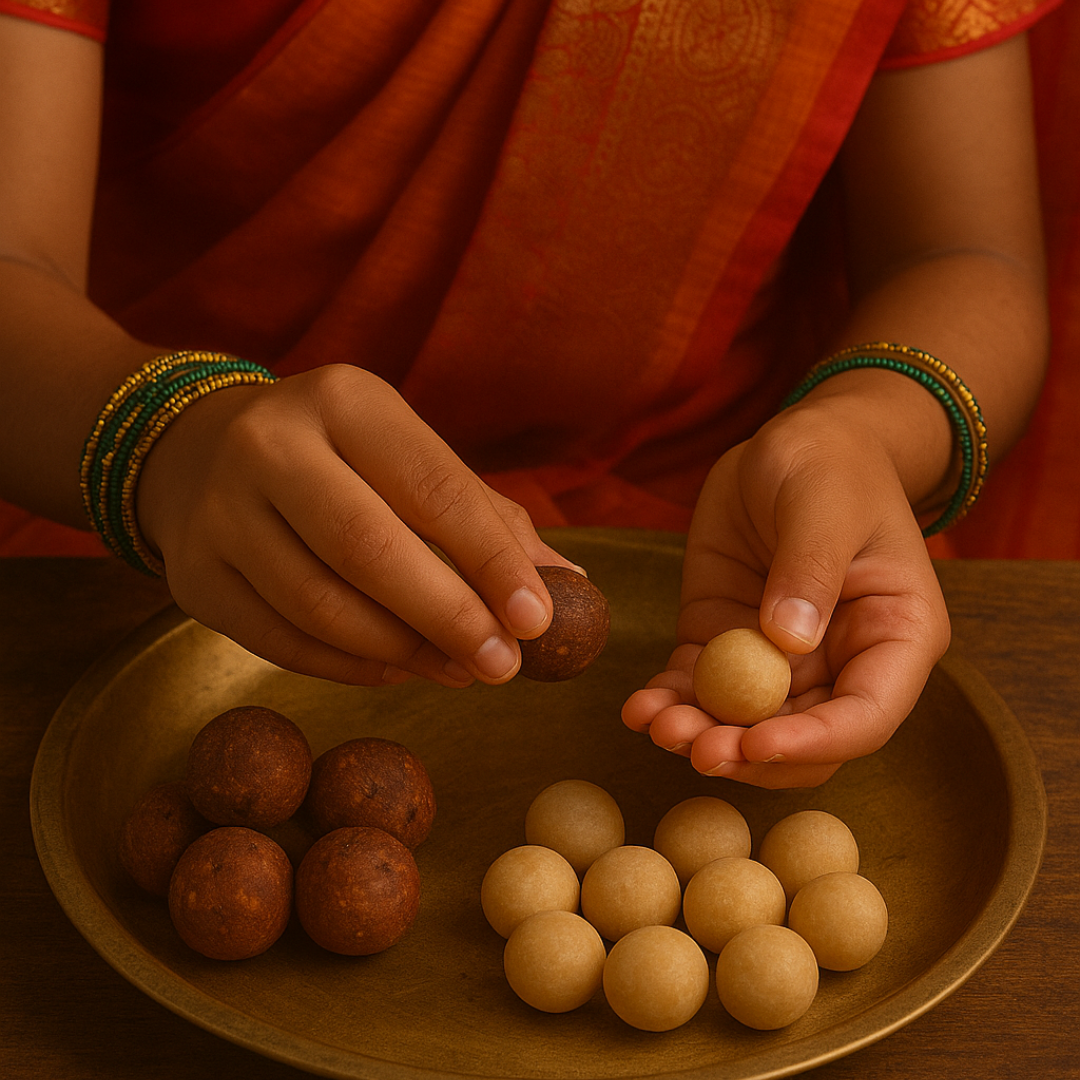
The Sacred Crunch: Seedai the tradition the Love of Lord Krishna
Share
Janmashtami, the joyous celebration of Lord Krishna’s birth, is one of India’s most beloved festivals. Marked by midnight pujas, devotional singing, and reenactments of Krishna’s playful childhood, this festival beautifully blends bhakti (devotion) with tradition. Across homes in South India, the divine celebration begins with intricate kolams, the fragrance of fresh flowers, and the aroma of special prasadam prepared for the beloved Balakrishna. Among these festive offerings, two humble yet sacred snacks hold a special place—Vellai Seedai and Uppu Seedai.
Every Janmashtami, kitchens across South India echo with the crackle of deep-fried Seedai. But why do we offer these tiny crunchy delights to little Krishna? Read on to discover the story and the symbolism behind Vella Seedai and Uppu Seedai.
In South Indian homes, Janmashtami is incomplete without the presence of Seedai—especially Uppu Seedai (salted) and Vella Seedai (jaggery). But this tradition isn’t just about taste—it’s deeply symbolic.
Legend says that Krishna, known for his love of butter and all things homemade, adored Seedai. Its round shape is said to represent wholeness and completeness, while the jaggery and salt versions symbolise the sweet and savoury moments of life.
-
Uppu Seedai reflects life's grounding experiences—salted, earthy, real.
-
Vella Seedai, made with jaggery, represents the sweet, divine joys Krishna brings into our lives.
Offering both is symbolic: it says to Krishna, “We welcome both joy and challenge with grace.”
At Malu’s, we preserve this tradition with love—our handmade Seedai are crafted the same way our grandmothers did, in small batches with care and devotion.
This Janmashtami, unbox tradition. Unbox devotion. Unbox joy.
Unbox Festivities with Malu’s.
